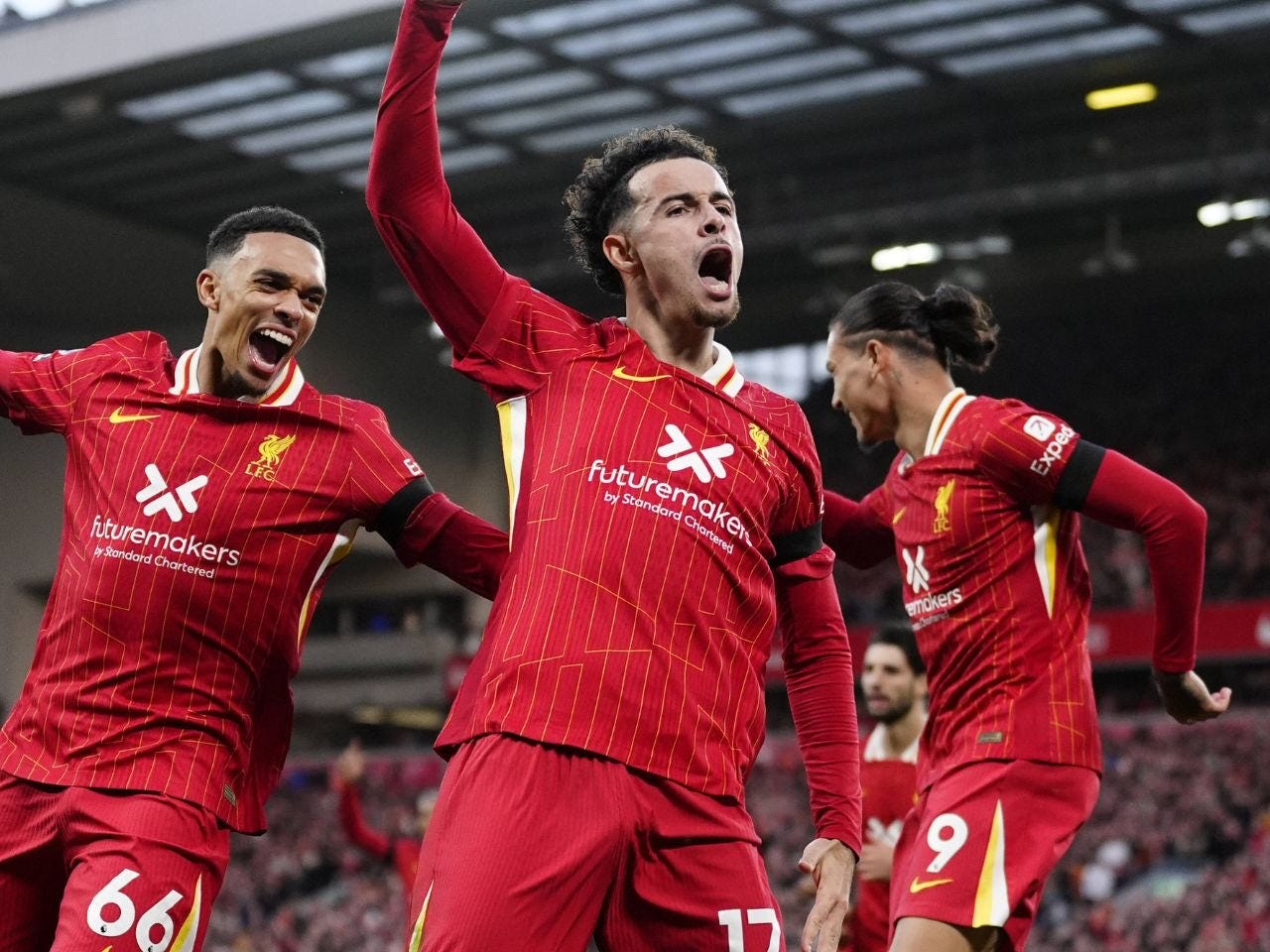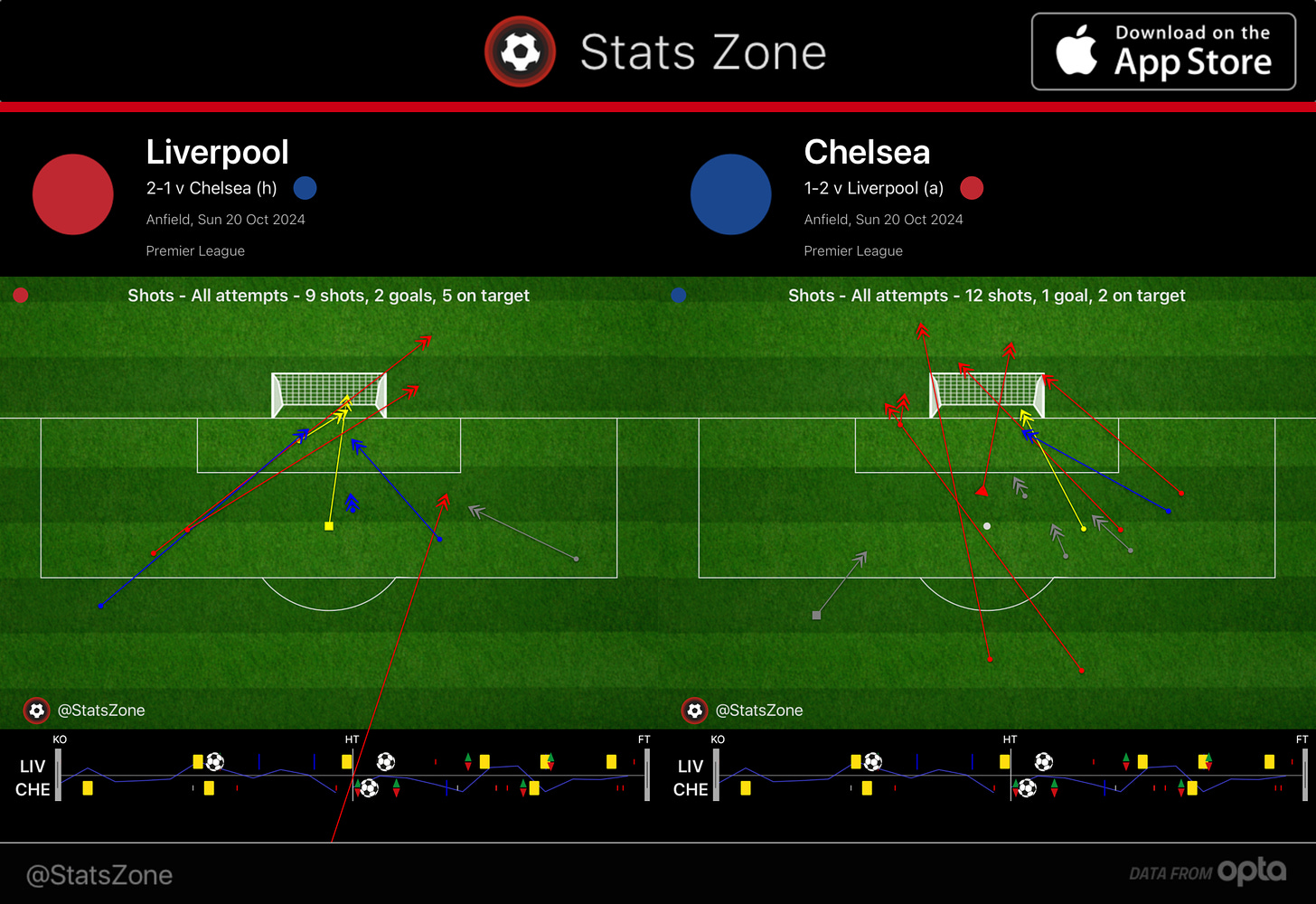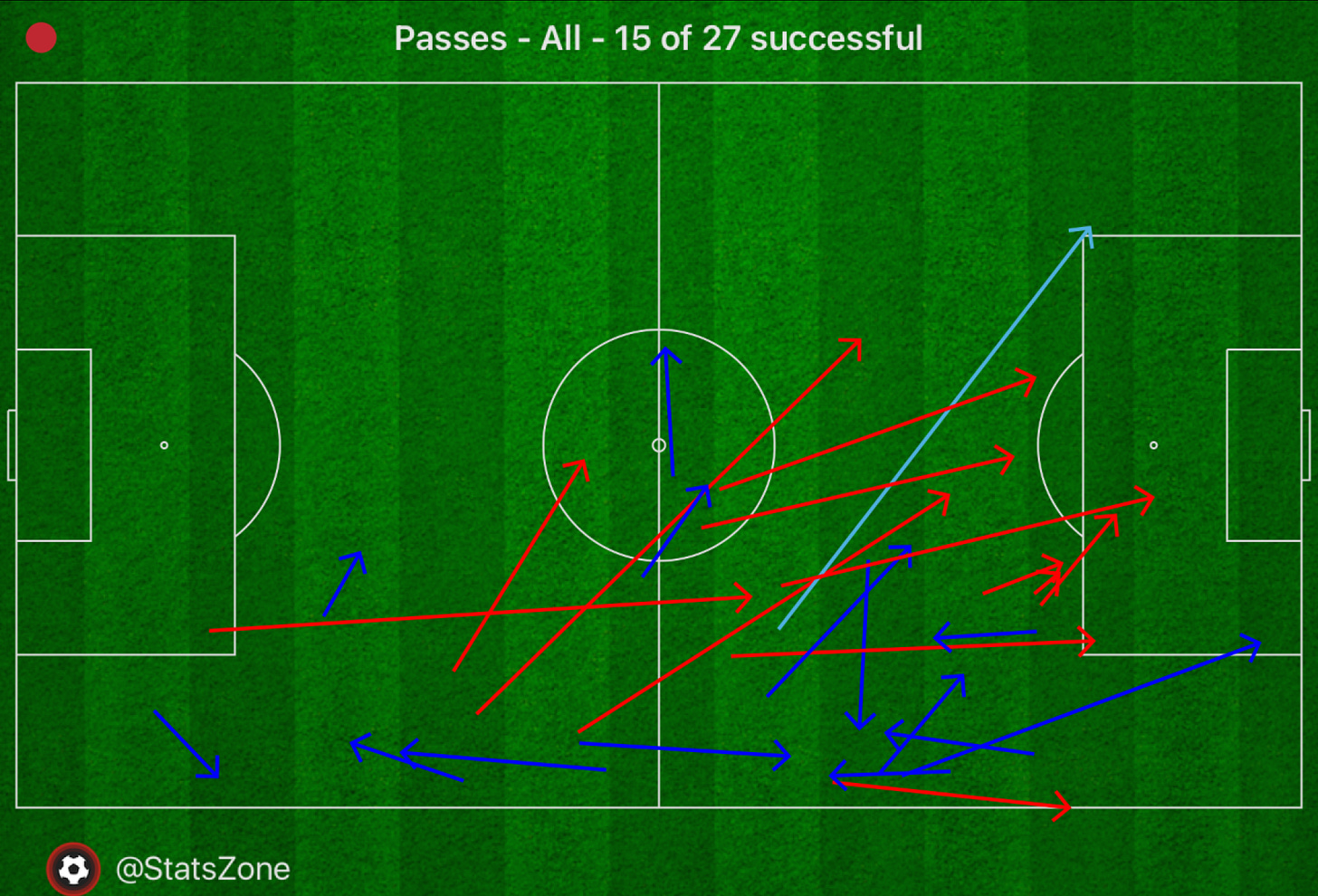Stat of the Match: Liverpool 2-1 Chelsea
Liverpool set a relative low for pressing and a high for long passes in their Premier League win over Chelsea. Will the performance have pleased Arne Slot?
Liverpool recorded their seventh consecutive win, their 10th victory from 11 games, by beating Chelsea 2-1 at Anfield on Sunday. It was a very strange match.
Take the first half, for instance. There were only eight shots in total, which makes it sound low key. Yet there was a penalty, another spot kick given then overturned, an offside goal and a reasonable shout for a red card for Tosin Adarabioyo.
That’s just Liverpool’s offence too; Cole Palmer had an Opta-defined big chance which was blocked by the undoubted Player of the Match, Curtis Jones. The game was very scrappy, bursting into flame in moments.
There will have been concerns for Arne Slot, starting with the offence. The Reds’ total of eight-non penalty shots is their joint-10th fewest for a home game in the FBRef database. It can’t be entirely coincidental that half of the 12 matches with eight or fewer occurred behind closed doors; they weren’t really ‘home’ games at all.
The eight shots against the Blues don’t look great when broken down. Virgil van Dijk struck the first from 63 yards out in the first minute, then the second was a blocked Mohamed Salah effort which did at least result in the penalty. The same was almost true for Jones’ first attempt, with the initially awarded spot kick from that move overturned.
In the 46 minutes between the decisive goal and full time, Liverpool’s three shots were collectively worth just 0.09 expected goals. The one of the trio which didn’t fly high and wide travelled 24 yards to dribble towards Robert Sánchez in the Chelsea goal.
Not that they needed to score again in that period, of course. Keeping Enzo Maresca’s side from bagging a second equaliser was the priority. Liverpool did this reasonably well, though had Renato Veiga steered a late header on target, Chelsea’s impressive performance could have been rewarded with the point they arguably deserved.
Liverpool’s off-ball strategy appeared peculiar, especially first half. There were repeated examples of Chelsea easily passing through the lines of Red shirts (as Josh Williams covers in detail here). The most extreme example occurred in the move leading to eventual scorer Nicolas Jackson grazing the woodwork.
Reece James was able to pass unchallenged from the edge of the Blues’ defensive third to Moisés Caicedo in the centre-circle. A sharp turn allowed him to play the ball forward for Jackson to collect it in the Liverpool box. From back to front in two passes.
While this won’t have been what Slot wanted to see, Kopites will have to get used to a more passive approach under the Dutchman. The Reds’ PPDA - passes allowed per defensive action in the opposition half - is the highest it has been since 2018/19 this season, with a lower figure indicating a more intense press.
The class of 2024/25 have been shutting down the opposition in their half at a lower rate than the injury and/or age hampered sides of two and four years ago. In only two home league games since the 2022 World Cup did the Reds record a higher PPDA figure than the 12.8 notched against Chelsea.
The control favoured by Slot was largely absent too. The Reds recorded their lowest build-up (first two thirds of the pitch) pass accuracy of the season, their lowest in total since the visit of Arsenal last December. Salah completed his second lowest proportion of passes in a Liverpool shirt (when attempting at least 30).
The last time he was less accurate, the veteran was 25 years old. However, it was noticeable that many of Salah’s failed attempts against his former side were over a reasonable distance.
It was similar across the board. Liverpool attempted 72 long passes, with a lowly 37.5 per cent completion rate. The only other instance of similar at Anfield occurred against Marcelo Bielsa’s Leeds when 2020/21 got underway; if the Blues were not so intensely man-to-man as that side (at least to my eye), there were definite shades of that approach. Other than that game, you’re looking at a trio of Champions League knockout matches on the road if you’re hunting for so much inaccurate long passing from the Reds.
As unusual as the numbers for these various metrics were, who’s to say it didn’t work? A long pass nearly set Diogo Jota clean through on goal in just the sixth minute, with a red card the plausible outcome. Another created a situation in which Cody Gakpo was closing down Sánchez in his six-yard box to the point he almost got a goal from a rebound.
An Andy Robertson clearance put Salah clear to potentially win a penalty, while the move leading to the spot kick the Reds were awarded began in similar fashion with a long ball forward from Ibrahima Konaté. Slot wouldn’t have wanted Liverpool to invite quite so much Chelsea pressure in the first half, but doing so enabled his side to generate many of their best offensive moments.
The idea of a passive, counter attacking Reds side is enough to summon memories of Roy Hodgson. This was clearly not that. It was certainly an intriguing performance though. There is much for Slot to chew over as he prepares for the other tough challenges ahead.










I don’t know if he was adjusting his tactics to the opposition as much as managing the time of his players after a busy international break for many of them. I can only assume jones didn’t finish the game as he has been up late with his new baby. That was his best performance in a long while certainly.